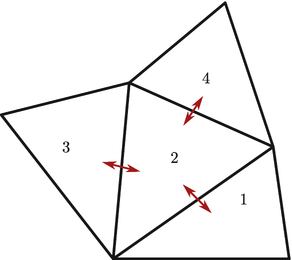 | ||
discontinuous galerkin methods for hyerbolic pdes 1 olindo zanotti
In applied mathematics, discontinuous Galerkin methods (DG methods) form a class of numerical methods for solving differential equations. They combine features of the finite element and the finite volume framework and have been successfully applied to hyperbolic, elliptic, parabolic and mixed form problems arising from a wide range of applications. DG methods have in particular received considerable interest for problems with a dominant first-order part, e.g. in electrodynamics, fluid mechanics and plasma physics.
Contents
- discontinuous galerkin methods for hyerbolic pdes 1 olindo zanotti
- Introduction to discontinuous galerkin methods
- Overview
- References
Discontinuous Galerkin methods were first proposed and analyzed in the early 1970s as a technique to numerically solve partial differential equations. In 1973 Reed and Hill introduced a DG method to solve the hyperbolic neutron transport equation.
The origin of the DG method for elliptic problems cannot be traced back to a single publication as features such as jump penalization in the modern sense were developed gradually. However, among the early influential contributors were Babuška, J.-L. Lions, Nitsche and Miloš Zlámal. DG methods for elliptic problems were already developed in a paper by Baker in the setting of 4th order equations in 1977. A more complete account of the historical development and an introduction to DG methods for elliptic problems is given in a publication by Arnold, Brezzi, Cockburn and Marini. A number of research directions and challenges on DG methods are collected in the proceedings volume edited by Cockburn, Karniadakis and Shu.
Introduction to discontinuous galerkin methods
Overview
Much like the continuous Galerkin (CG) method, the discontinuous Galerkin (DG) method is a finite element method formulated relative to a weak formulation of a particular model system. Unlike traditional CG methods that are conforming, the DG method works over a trial space of functions that are only piecewise continuous, and thus often comprise more inclusive function spaces than the finite-dimensional inner product subspaces utilized in conforming methods.
As an example, consider the continuity equation for a scalar unknown
where
Now consider the finite-dimensional space of discontinuous piecewise polynomial functions over the spatial domain
for
Then similarly choosing a test function
multiplying the continuity equation by
